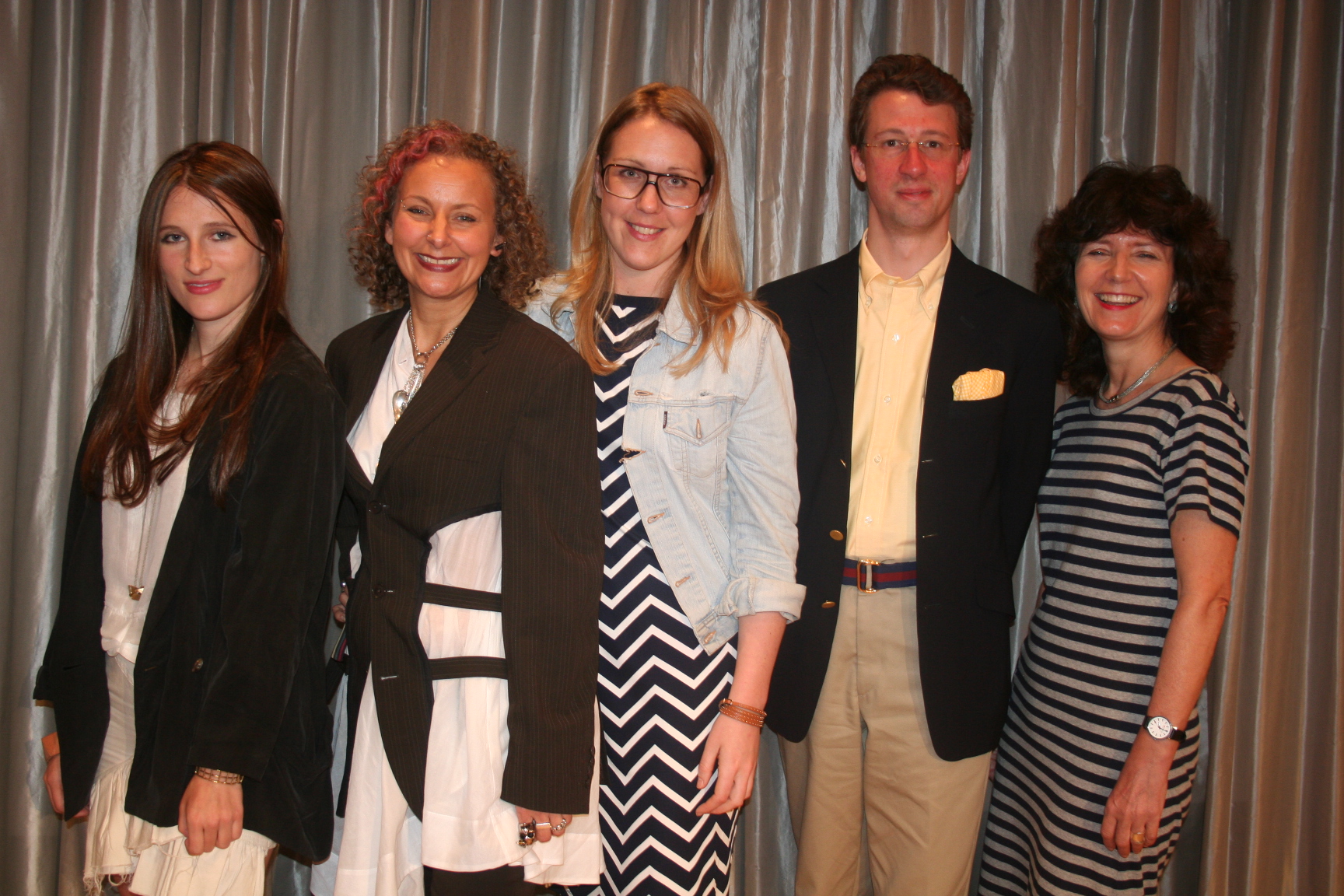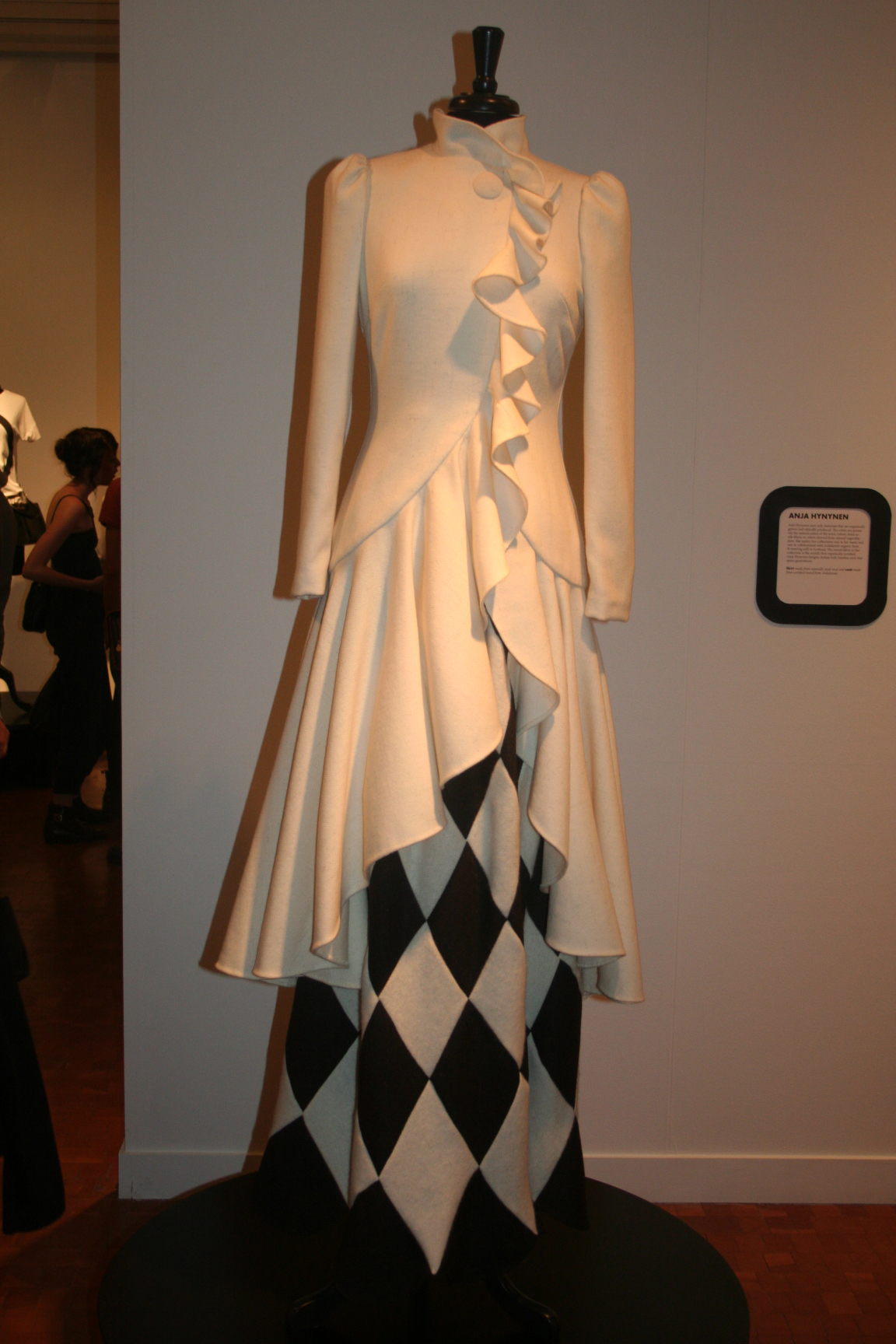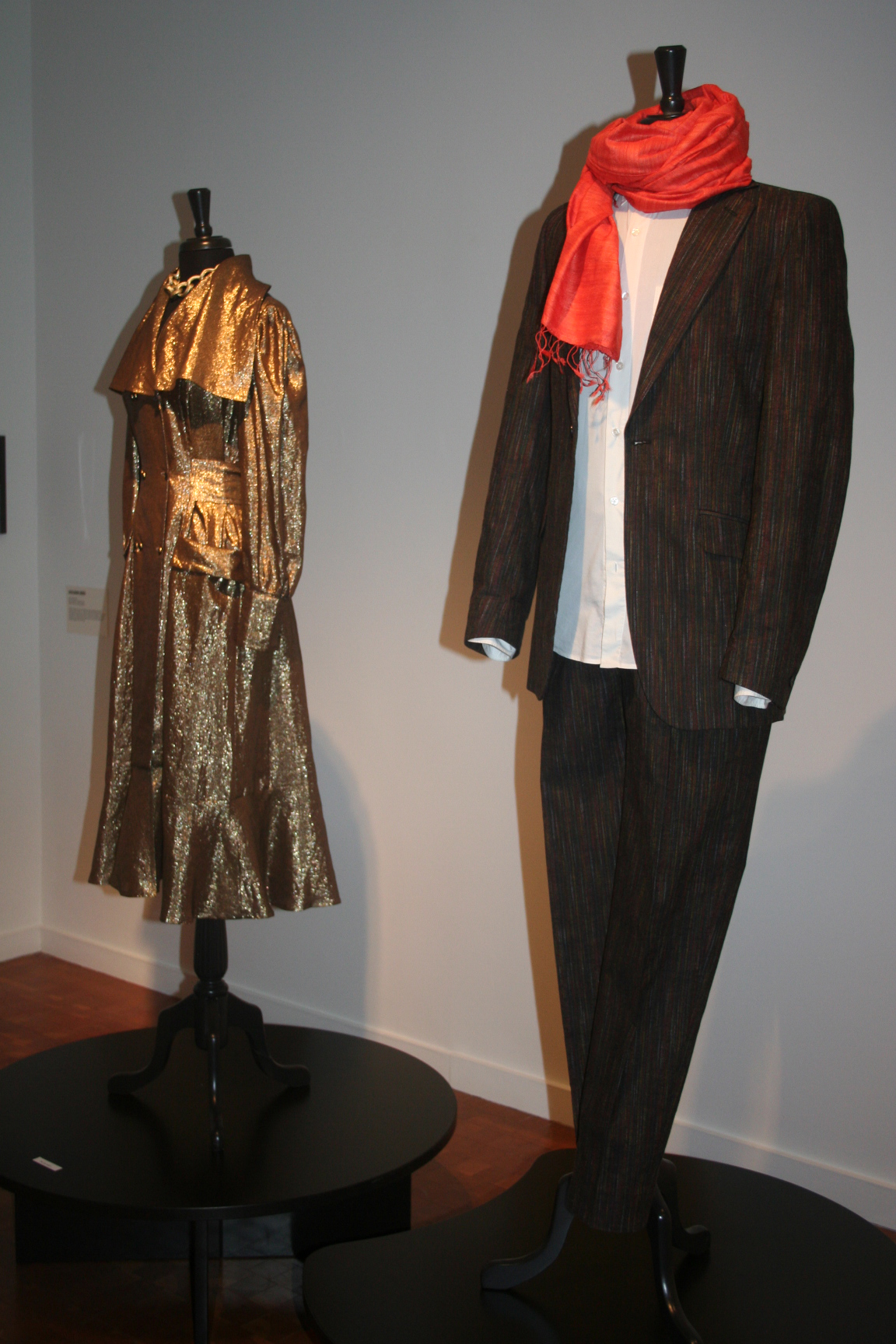Eco Chic Sweden
A new exhibition titled “Eco Chic – Towards Sustainable Swedish Fashion” has opened at Scandinavia House in New York. The symposium held in conjunction with the opening of “Eco Chic” gave us all something to think about.
-
 A recent symposium on Eco fashion at Scandinavia House featured these panelists (from left to right): Eviana Hartman, Sass Brown, Karin Stenmar, Marcus Bergman, and moderator Hazel Clark.
A recent symposium on Eco fashion at Scandinavia House featured these panelists (from left to right): Eviana Hartman, Sass Brown, Karin Stenmar, Marcus Bergman, and moderator Hazel Clark. -
-
Featuring a group of interesting designers like Anja Hynynen, Julian Red and Johanna Hofring, the new exhibition at Scandinavia House shows that Swedes have a great mix when it comes to being green in a fashionable way.
A British study conducted in 2006, indicated that clothing consumption had increased by one third in 4 years, while at the same time the market was flooded with cheap, low quality clothing. For increased sustainability, we have to change our attitude to fashion and trends. Slow fashion entails personal style, high quality and an awareness of the impact of clothing on the environment. At the symposium held in conjunction with the opening of “Eco Chic – Towards Sustainable Swedish Fashion”, Marcus Bergman, director of The Eco Cotton Company, one of the pioneers in organic cotton production, said:
“The issue isn’t can we afford organic cotton – the issue is do we really have to buy so many garments?” -
 Wool skirt and coat by Swedish eco designer Anja Hynynen.
Wool skirt and coat by Swedish eco designer Anja Hynynen. -
-
You could’ve heard a pin drop after that comment - it was a real eye-opener.
Bergman was one of the panelists discussing what can be done to create greener and more fair fashion. The other panelists were Sass Brown, Professor at FIT, designer and fashion editor Eviana Hartman and Karin Stenmar, co-founder of Dem Collective. Moderator was Doctor Hazel Clark from the School of Art and Design History and Theory at Parsons. Discussing the use-and-throw-away mentality towards clothes and its consequences, as well as fashion’s dirty little secret of abusing women by never paying proper wages, and destroying natural habitats and thus shortening people’s lives, the panelists suggested something different. Instead of being frivolous, we the consumers ought to keep a tighter rein. Said Hartman:
“Each garment we look into buying should be approached with the question: ‘Is this useful?’” -
 Eco design by Swedish Julian Red.
Eco design by Swedish Julian Red. -
Cultural Exchange as part of going green
Both Bergman’s company, which is Swedish-Peruvian, and Stenmar’s, which operates partly in Sri Lanka, embrace the idea of cultural exchange as part of going green.
“We want to be living proof that it’s both possible and practical to be responsible,” Stenmar said. “We’ve always paid living wages, which is not the same as minimum wages. You can’t live on minimum wages. We asked the women in Sri Lanka how much their rent was, how much it cost for them to have their children go to school and so on. Living wages are three times as high as minimum wages there. I don’t think consumers are aware of their clothes’ background.”
To shift from growing cotton the conventional way to growing it ecologically is a costly and lengthy procedure, however. It takes about 3-4 years for the soil to rid itself completely of chemicals, and during that time it’s impossible for the grower to sell the cotton as “organic” as it’s not yet pure enough.
“He can’t sell it for the price of organic cotton, and at the same time he is also producing less because he is not using pesticides,” Brown concluded.
Fashion was also discussed. The problem – and allure – of fashion is of course its immediacy, it’s new and it’s hot and we want it and we want it now.
“We have to get away from the ‘party-top syndrome’,” said Bergman. “You know, you go out and buy a cheap party top on Friday afternoon, you wear it out for Saturday and then never again. It’s a waste.”
An expensive waste, which is fueled by big time designers and big time money.
“The fashion houses’ anticipated big new looks create an illusion for the consumer that says ‘change your entire look!’ every season,” said Hartman. “But there really is a place for a more flexible and subtle design.”
The panelists challenged us consumers to view fashion eco-consciously, which means: -
• Buy one ecological (and fair trade) item that might be more expensive, rather than ten cheap items.
• Avoid copying the trends that higher-end fashion houses dictate. That includes buying designer knock-offs.
• Donate any old or used clothing.
• Share the clothes you get tired of with friends and relatives.
• If you’re crafty, make your own clothes. -
When you buy smarter, which you will do when you buy eco clothes because you will have to spend more money on each piece, your clothes will have a happier more interesting story to tell. That shirt won’t be heavy with nasty baggage about abused women or poorly paid farmers, instead you know you are doing yourself, others and the earth a favor.
The exhibition “Eco Chic – Towards Sustainable Swedish Fashion” is showing at Scandinavia House until August 21.
For more info: www.scandinaviahouse.org
www.ecocotton.com, www.bodkin.us, www.demcollective.com -
and on the exhibition and designers: http://www.nordstjernan.com/news/east/2137/
-
-
